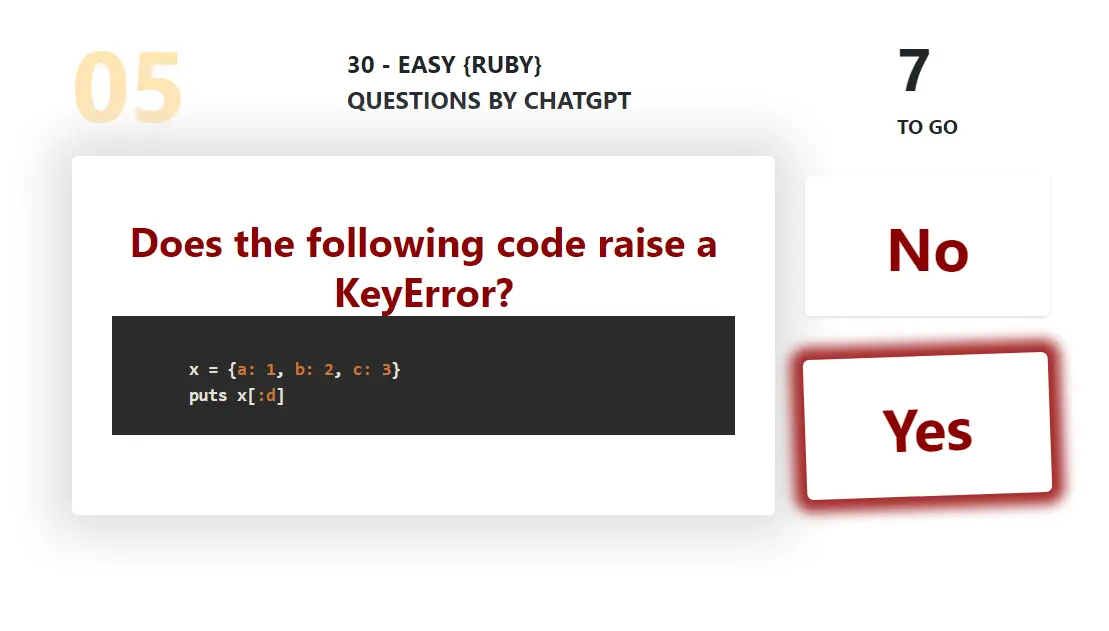
Syntax Showdown: Ruby vs Python vs JavaScript 15/03/2023 ~ Views: 1407
When it comes to choosing a programming language, one of the key factors to consider is its syntax. The syntax of a language determines how code is written and how it functions, and can have a significant impact on a developer's productivity and overall experience.
In this blog, we will compare the syntax of three popular languages: Ruby, Python, and JavaScript. We will provide examples of code in each language to help you understand the differences and similarities between them.
Ruby Syntax
Ruby is a dynamic, object-oriented programming language that is known for its simplicity and readability. Its syntax is designed to be intuitive and easy to learn, with a focus on reducing the amount of code required to perform tasks. Here's an example of Ruby code:
ruby
def greet(name)
puts "Hello, #{name}!"
end
greet("John")In this example, we define a function called "greet" that takes a parameter called "name". We then use string interpolation to print out a greeting to the console, using the value of the "name" parameter. Finally, we call the "greet" function with the argument "John".
Python Syntax
Python is a high-level, interpreted language that is widely used for web development, scientific computing, and data analysis. Its syntax is designed to be easy to read and understand, with a focus on using plain English words and phrases. Here's an example of Python code:
python
def greet(name):
print("Hello, {}!".format(name))
greet("John")This code is similar to the Ruby example, but uses a different syntax for string interpolation. In Python, we use the ".format()" method to insert a variable into a string. We define the "greet" function in the same way as in Ruby, and call it with the argument "John".
JavaScript Syntax
JavaScript is a versatile language that is used for both web development and server-side programming. Its syntax is designed to be flexible and adaptable, allowing developers to write code in a variety of different styles. Here's an example of JavaScript code:
javascript
function greet(name) {
console.log(`Hello, ${name}!`);
}
greet("John");This code is very similar to the Ruby example, but uses a different syntax for string interpolation. In JavaScript, we use the backtick character (`) to create a template literal, which allows us to interpolate variables directly into a string. We define the "greet" function using the "function" keyword, and call it with the argument "John".
Ruby Examples
Example 1: Loop through an array and print each element
ruby
fruits = ["apple", "banana", "cherry"] fruits.each do |fruit| puts fruit end
Example 2: Define a class and create an instance of it
ruby
class Person
attr_accessor :name, :age
def initialize(name, age)
@name = name
@age = age
end
def say_hello
puts "Hello, my name is #{@name} and I am #{@age} years old."
end
end
person = Person.new("John", 30)
person.say_helloPython Examples
Example 1: Loop through a list and print each element
python
fruits = ["apple", "banana", "cherry"] for fruit in fruits: print(fruit)
Example 2: Define a class and create an instance of it
python
class Person:
def __init__(self, name, age):
self.name = name
self.age = age
def say_hello(self):
print(f"Hello, my name is {self.name} and I am {self.age} years old.")
person = Person("John", 30)
person.say_hello()JavaScript Examples
Example 1: Loop through an array and print each element
javascript
const fruits = ["apple", "banana", "cherry"];
for (const fruit of fruits) {
console.log(fruit);
}Example 2: Define a class and create an instance of it
javascript
class Person {
constructor(name, age) {
this.name = name;
this.age = age;
}
sayHello() {
console.log(`Hello, my name is ${this.name} and I am ${this.age} years old.`);
}
}
const person = new Person("John", 30);
person.sayHello();Lets compare some syntax for a Fibonacci also.
Ruby Example:
ruby
def fibonacci(n)
if n < 2
n
else
fibonacci(n - 1) + fibonacci(n - 2)
end
end
# prints the first 10 numbers in the Fibonacci sequence
10.times do |n|
puts fibonacci(n)
endPython Example:
python
def fibonacci(n):
if n < 2:
return n
else:
return fibonacci(n - 1) + fibonacci(n - 2)
# prints the first 10 numbers in the Fibonacci sequence
for n in range(10):
print(fibonacci(n))JavaScript Example:
javascript
function fibonacci(n) {
if (n < 2) {
return n;
} else {
return fibonacci(n - 1) + fibonacci(n - 2);
}
}
// prints the first 10 numbers in the Fibonacci sequence
for (let n = 0; n < 10; n++) {
console.log(fibonacci(n));
}In all three examples, we define a function called "Fibonacci" that takes an integer parameter "n" and returns the nth number in the Fibonacci sequence. The Fibonacci sequence is a series of numbers where each number is the sum of the two preceding numbers, starting from 0 and 1. We then use a loop to print out the first 10 numbers in the sequence.
Comparing Syntax
While there are differences between the syntax of each language, there are also many similarities. For example, all three languages use curly braces ({}) to define code blocks, and all three use parentheses () to define function parameters. However, there are also some key differences to be aware of.
One major difference is how each language handles string interpolation. Ruby uses the "#{}" syntax, Python uses the ".format()" method, and JavaScript uses template literals. Another difference is how functions are defined: Ruby uses "def", Python uses "def", and JavaScript uses "function".
Conclusion
Choosing a programming language can be a difficult decision, but understanding the syntax of different languages can make the decision easier. Ruby, Python, and JavaScript each have their own unique syntax, but all three are designed to be easy to learn and use. By comparing the syntax of each language, you can determine which one is best suited for your specific needs and preferences.
Tags: #programming #coding #ruby #python #javascript #syntax #chatgpt








